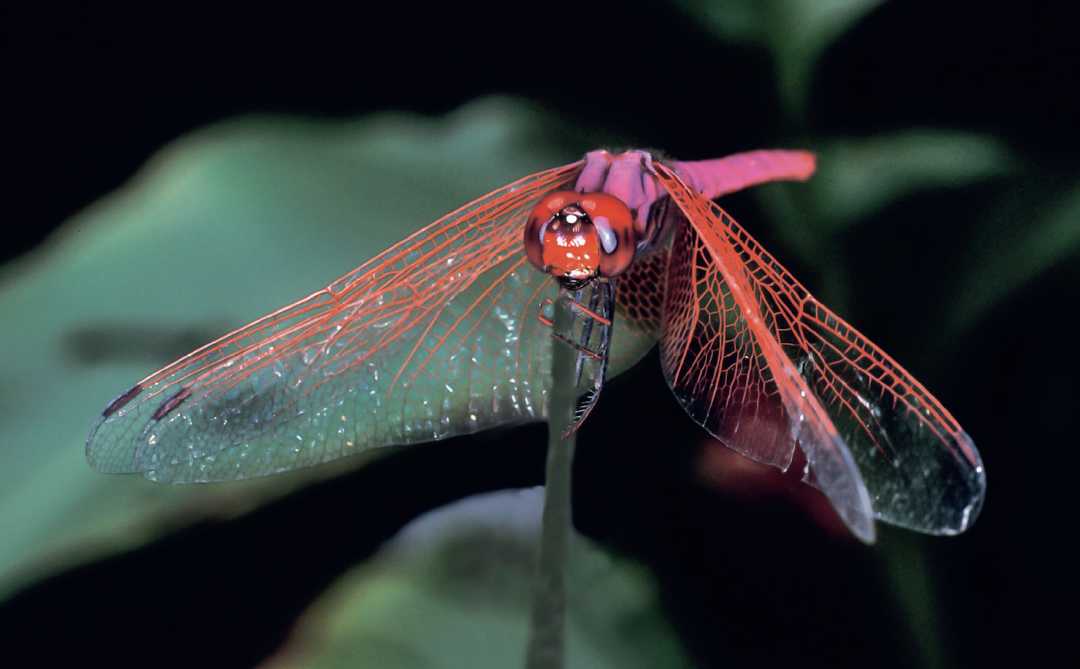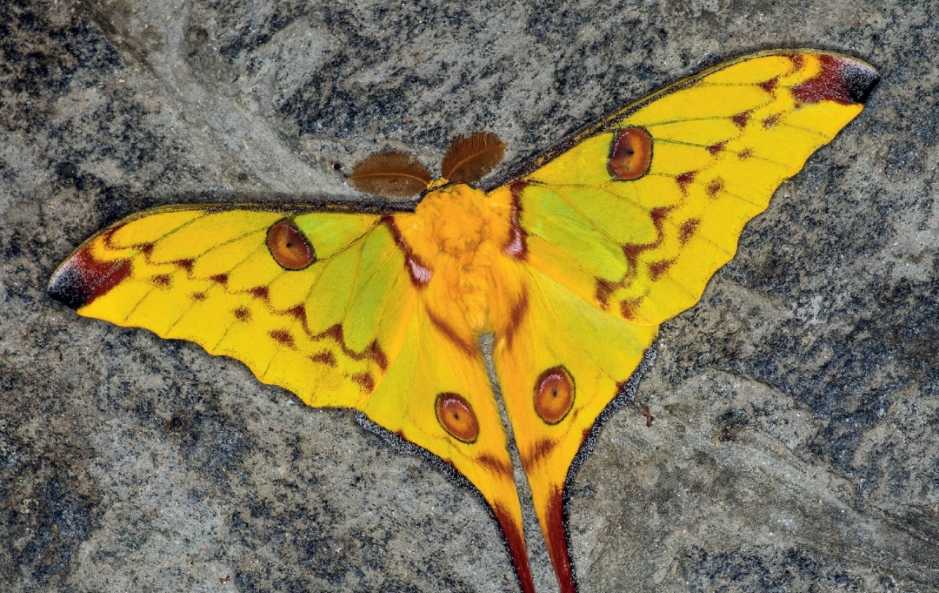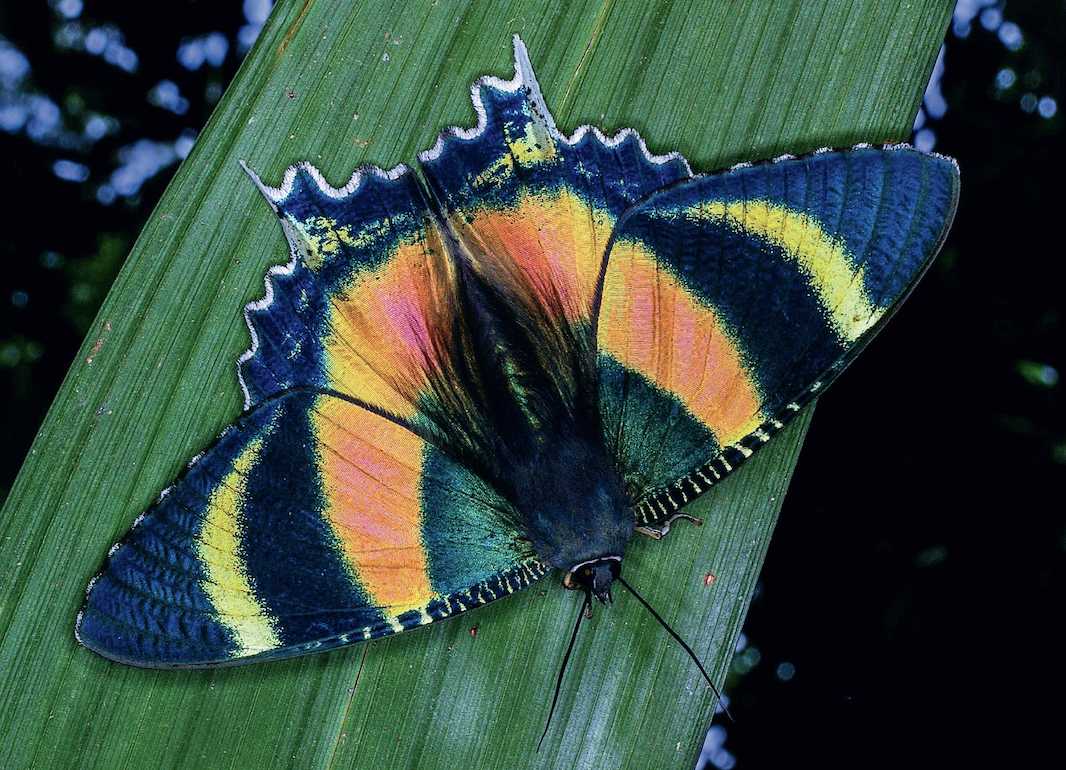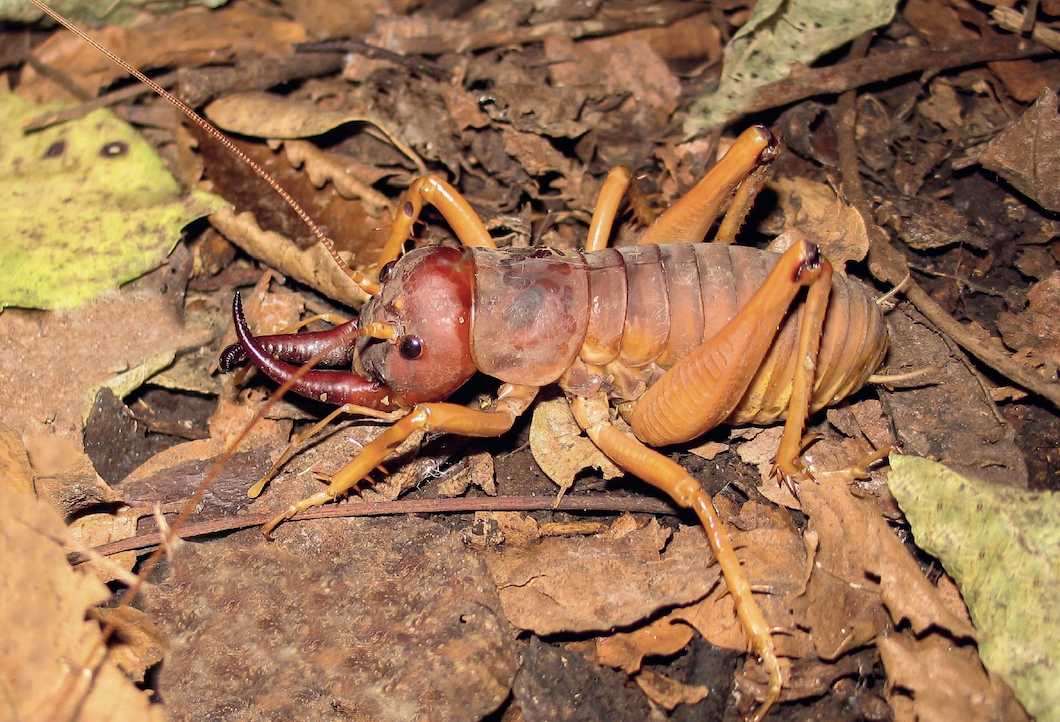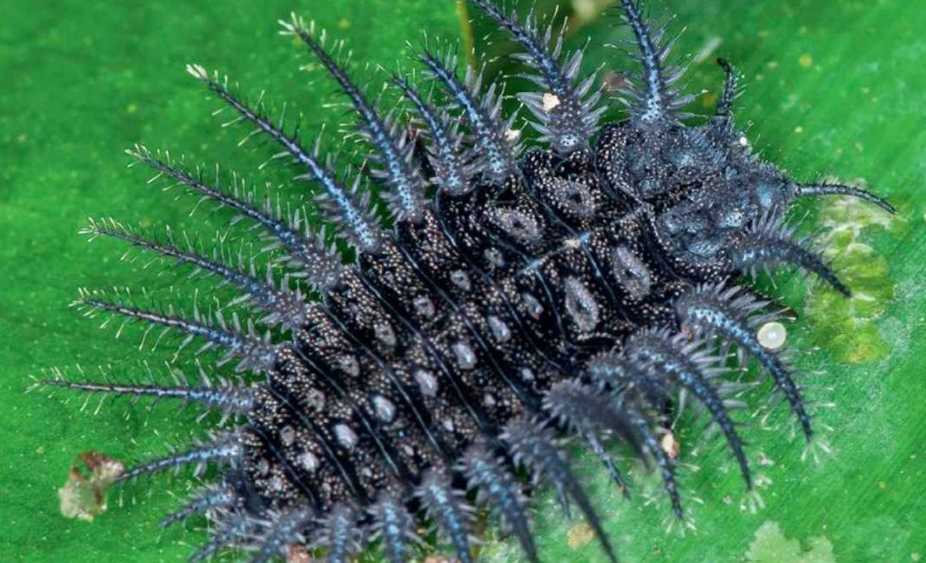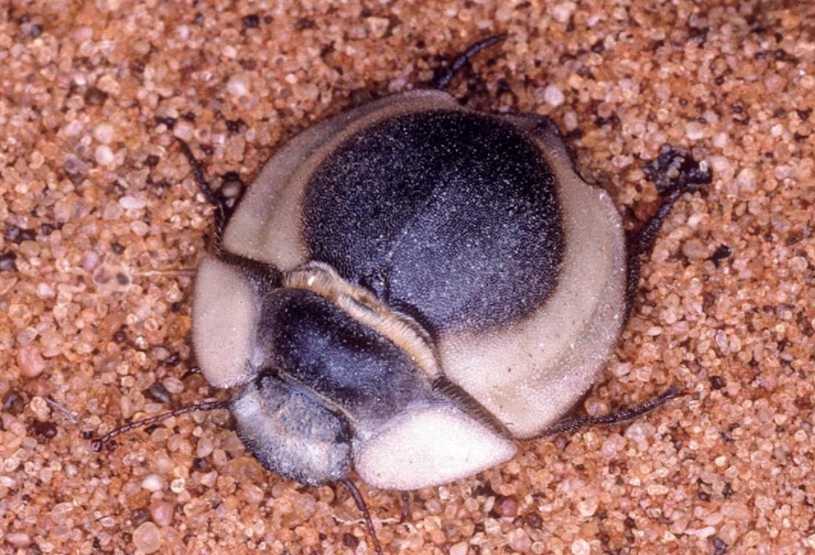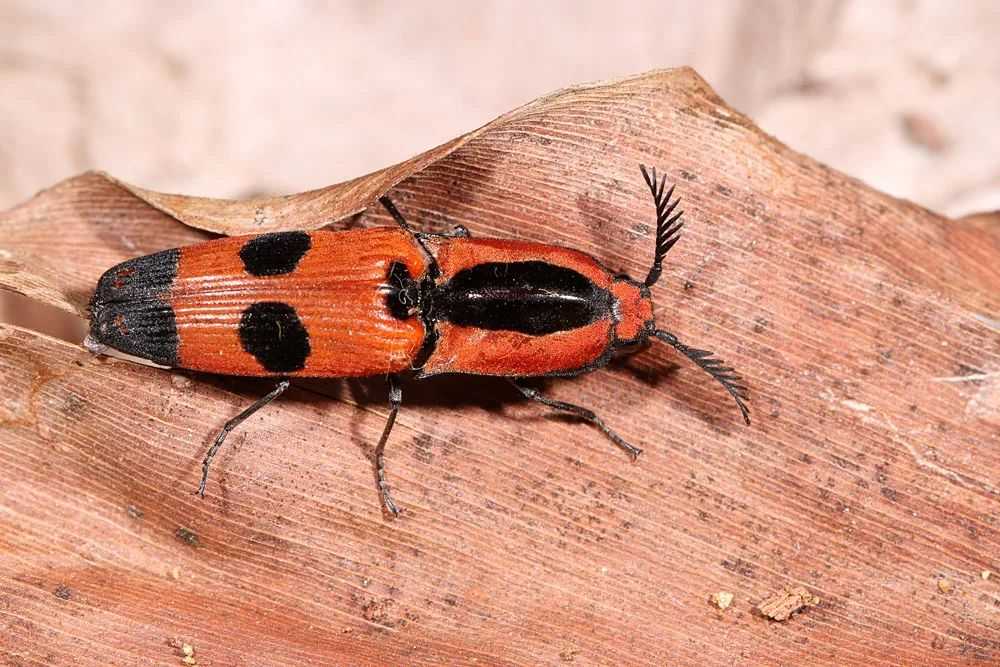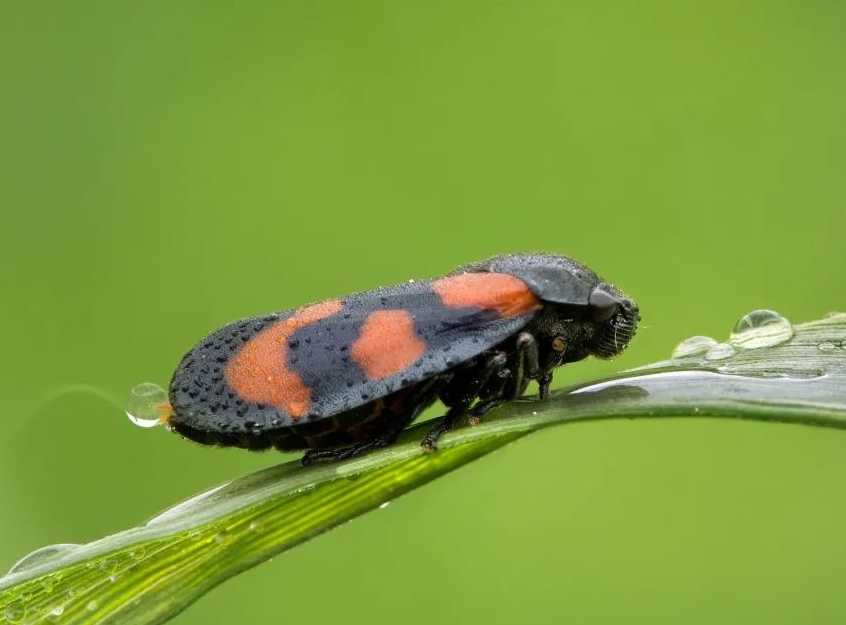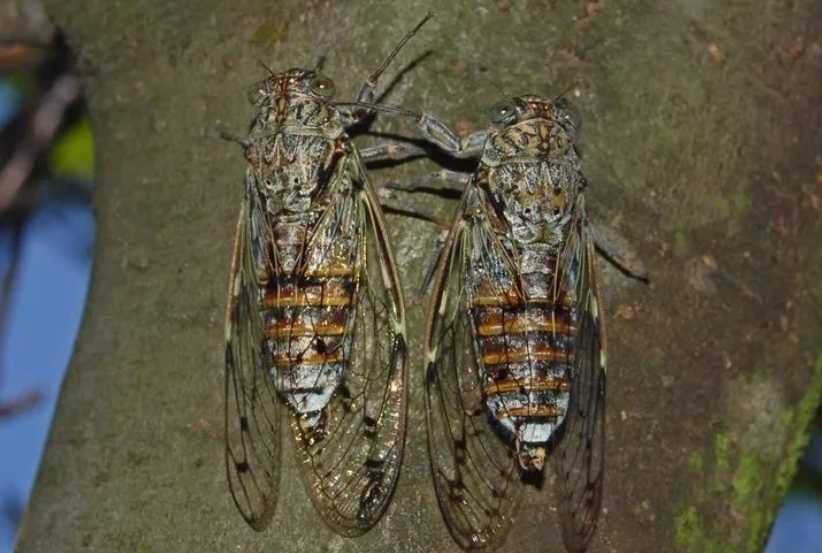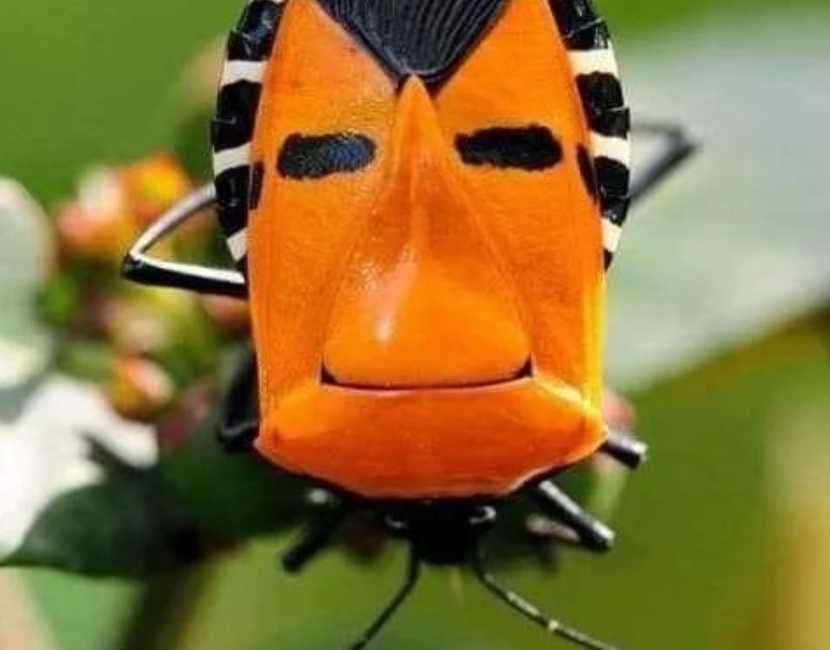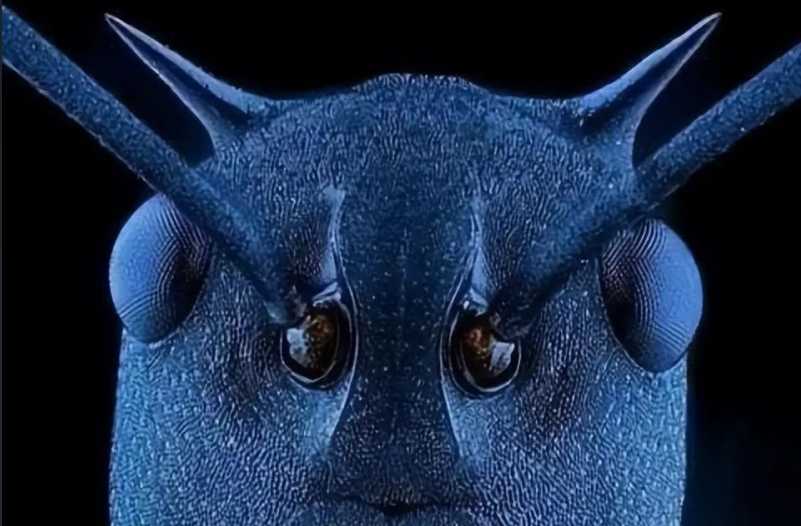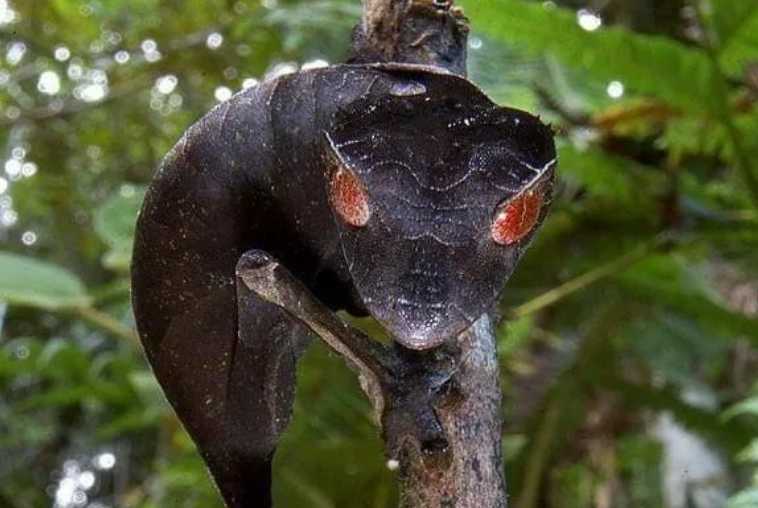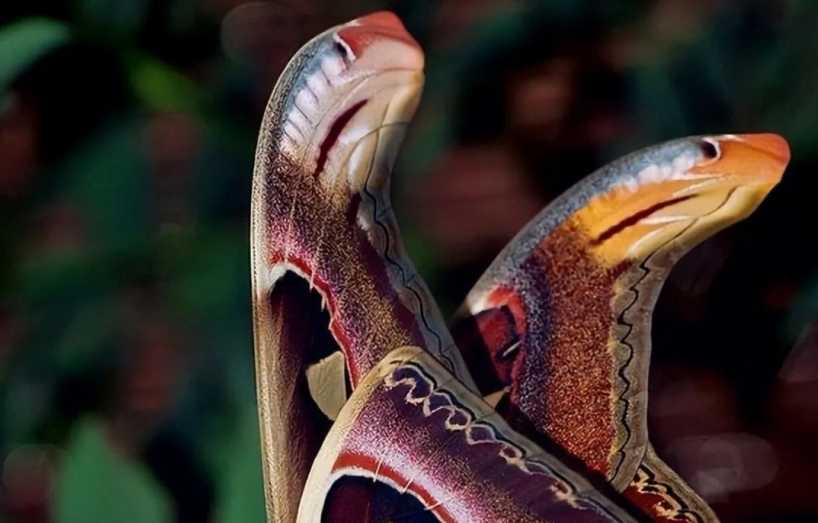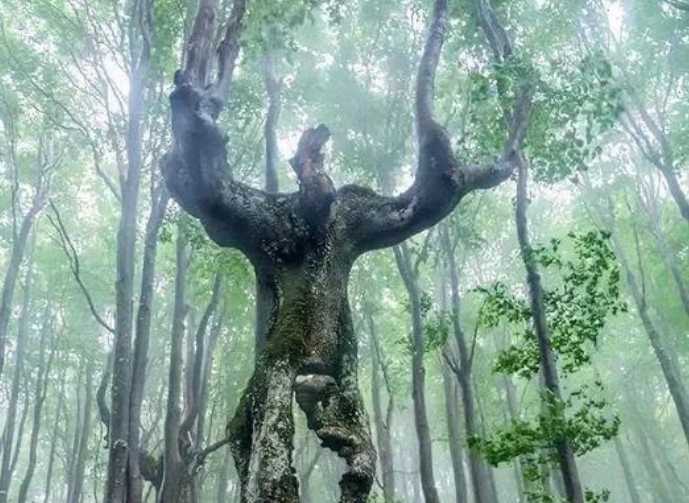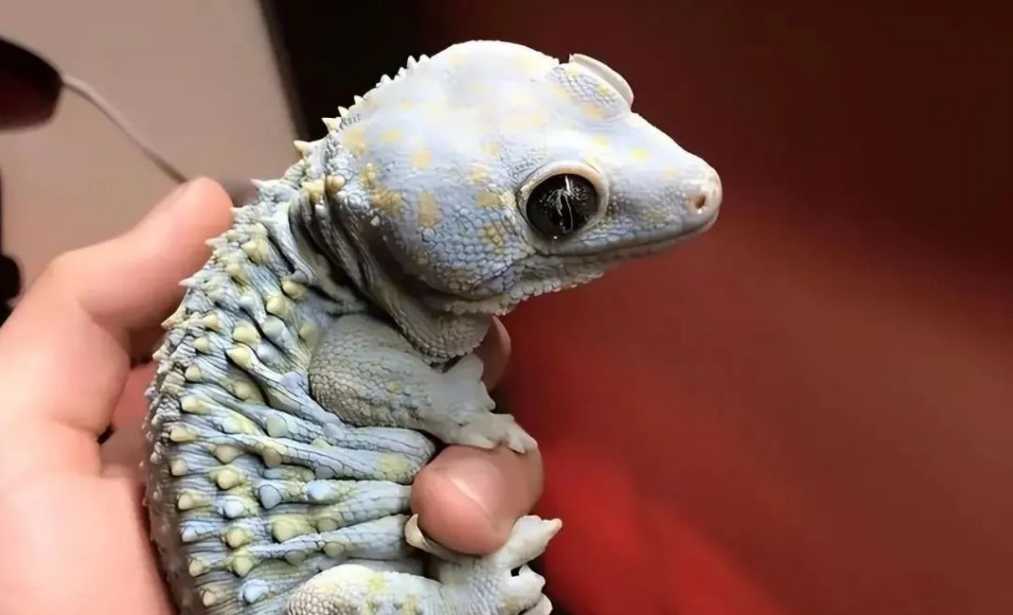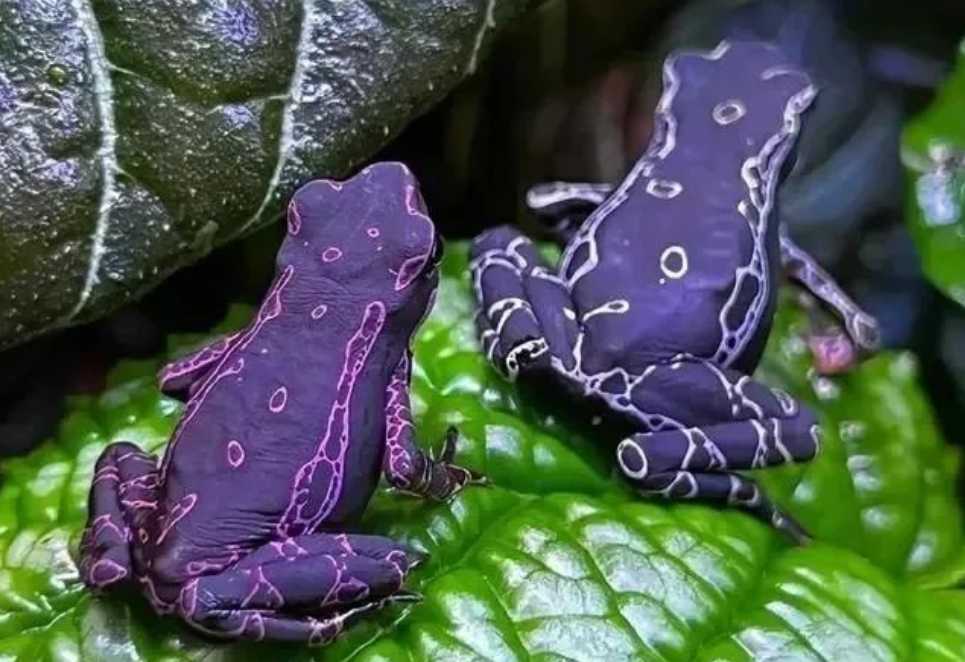Insect Close-up
Motuweta isolata: New Zealand's Fanged Giant Weta Fights with Elaborate Tusks
Endemic to New Zealand’s Mercury Islands, the Motuweta isolata, a species of giant weta, lives up to its name with a rugged, imposing appearance. The most striking feature of the male is its elongated, curved tusks—resembling miniature fangs—that evolved for ritualized combat rather than predation. Far from conventionally beautiful, its robust exoskeleton and bulky form reflect a life shaped by survival in the harsh island environment.
Spiky Larva of the False Ladybug Family Feeds on Fungi in Madagascar's Rainforests
In the lush rainforests of Madagascar, a larva covered in stiff, protruding spines catches the eye. Belonging to the false ladybug family (Endomychidae), this intriguing insect sports an armor of sharp projections, a striking adaptation that sets it apart in the tropical undergrowth. Far from its adult form’s resemblance to ladybugs, the larva’s spiky exterior serves both as protection and a unique identifier in the fungal-rich ecosystem.
Calopsocus sp.: Australia's Stunning Lichen Fly Redefines Psocid Expectations
Hailing from Australia’s eucalyptus forests, Calopsocus sp. shatters stereotypes about psocids (barklice) with its remarkable morphology. Unlike most psocids, whose wings end in sharp points, this species features wingtips that curve gently downward, creating a sleek, elegant outline. The smooth, downward bend—often paired with vibrant coloration or intricate patterns—sets it apart in the world of tiny, often-overlooked insects.
Lepidochora discoidalis: The Desert Beetle That Harvests Fog for Survival
As a master of arid adaptation, Lepidochora discoidalis thrives in desert environments by transforming its body and behavior into a living water collection system. This sleek, disc-shaped beetle, native to arid regions, has evolved a glossy exoskeleton that minimizes sand adhesion, allowing it to glide effortlessly across dunes in search of food scraps. But its most remarkable trait lies in its ability to harvest moisture from the air—a crucial skill in landscapes where rainfall is almost nonexistent.
Click Beetles: Nature's Acrobatic Jumpers with a Startling Survival Trick
Click beetles, members of the family Elateridae, captivate with their unique ability to launch themselves into the air with an audible "click," a defense mechanism that has fascinated scientists and nature enthusiasts alike. Found worldwide, these beetles blend the mundane with the extraordinary, combining a modest 外形 with a spectacular biological adaptation.
Spittlebugs: Nature's Mighty Jumpers and Foam - Nest Builders
Spittlebugs, remarkable for their athletic leaping abilities, rank among the strongest jumping insects on the planet. These tiny arthropods, belonging to the family Cercopidae, blend plant - feeding habits with a unique parental strategy, making them a fascinating subject in entomology.
Cicadas: The Resonant Insects of Temperate to Tropical Climes
Cicadas, iconic insects inhabiting temperate to tropical regions worldwide, are renowned for their deafening calls—and often reviled for the noise that earns them a reputation as bothersome pests. These arthropods, belonging to the family Cicadidae, blend distinctive physical traits with a life cycle that spans years underground before their brief, noisy emergence.
The Face Bug (Auchenorrhyncha: Proconiini): Nature's Cryptic Portraitists of Southeast Asia
The face bug, a member of the Proconiini tribe in the hemipteran suborder Auchenorrhyncha, earns its name from a remarkable evolutionary trick: the dorsal surface of its thorax and abdomen resembles a human face, complete with "eyes," "noses," and even "mouths." Native to the tropical forests of Southeast Asia, these insects showcase nature’s most whimsical form of mimicry, with each individual sporting a unique facial pattern that defies repetition.
Ants' Facial Close - ups: Uncovering the Expressive Faces of Tiny Insects
Ants, those ubiquitous tiny creatures, have always been a common sight in our daily lives. However, recent close - up photography has revealed a surprising fact: ants seem to have expressions. These detailed images capture the nuances of their faces, showing features that give the impression of different emotions.
Satanic Leaf-Tailed Gecko: Nature's Master of Dead Leaf Mimicry
In the dense rainforests of Madagascar, a remarkable reptile demonstrates nature’s most astonishing camouflage: the Satanic leaf-tailed gecko (Uroplatus phantasticus). Renowned for its uncanny resemblance to a dried, withered leaf, this gecko has evolved the perfect disguise to vanish into its forest habitat.
The Atlas Moth: Wings That Mimic Two Snake Heads
In the tropical forests of Asia, the Atlas moth (Attacus atlas) astounds with its massive wingspan—reaching up to 25 centimeters, roughly the size of an adult human palm. Yet its most remarkable trait lies in the dramatic patterns on its hindwings: two eye-like spots and serpentine shapes that uncannily resemble a pair of snake heads, a masterful evolutionary trick to deter predators.
The "blue Arabian lizard" might refer to several species. Here are two possible candidates:
Uromastyx thomasi: Also known as the Oman spiny - tailed lizard, it belongs to the Uromastyx genus. It mainly inhabits the arid and semi - arid regions of the Arabian Peninsula, specifically in Oman. This lizard has two basic color schemes, blue and green, along with gray, pink, and other interesting hues. Its back is patterned with red stripes along the spine and large black spots. It has a stocky build, with strong limbs and claws adapted for digging in the rocky desert terrain. Despite its small size, it is a robust species.
The Beech Tree That Mysteriously Grew to Resemble a Giant Human Form
Deep in the heart of Bulgaria’s Balkan Mountains, a beech tree has astonished locals and visitors alike with its uncanny resemblance to a giant human figure. The tree, located in a remote forest region, appears to have formed natural "limbs," a "chest," and even a "head" that mimic the proportions of a human body, sparking wonder and speculation about its extraordinary shape.
Aggressive Tokay Geckos: A Closer Look at Their Biting Abilities
Tokay geckos are known for their aggressive nature and powerful bites. These reptiles, native to Southeast Asia, have sharp teeth that are large enough to pierce human skin. Their bites can cause significant pain and discomfort, and may even lead to infection if not treated properly.
The Enigmatic Purple Harlequin Frog: A Rare Gem of the Amphibian World
Deep within the cloud forests of Central and South America lurks a creature that defies expectations with its vibrant hue and peculiar appearance: the purple harlequin frog. This critically endangered amphibian, characterized by its rich violet coloration interspersed with black and yellow patterns, stands out as both a biological wonder and a symbol of the urgent need for conservation.
The Duck-Billed Tree Frog: Nature's Quirky Amphibian Marvel
Deep in the rainforests of Central and South America, a peculiar amphibian with a bill-like snout has captivated herpetologists: the duck-billed tree frog (Hyla labialis). This arboreal species, named for its flattened, downward-curving snout that resembles a duck’s bill, showcases nature’s whimsical approach to adaptation, blending functionality with an unforgettable appearance.

